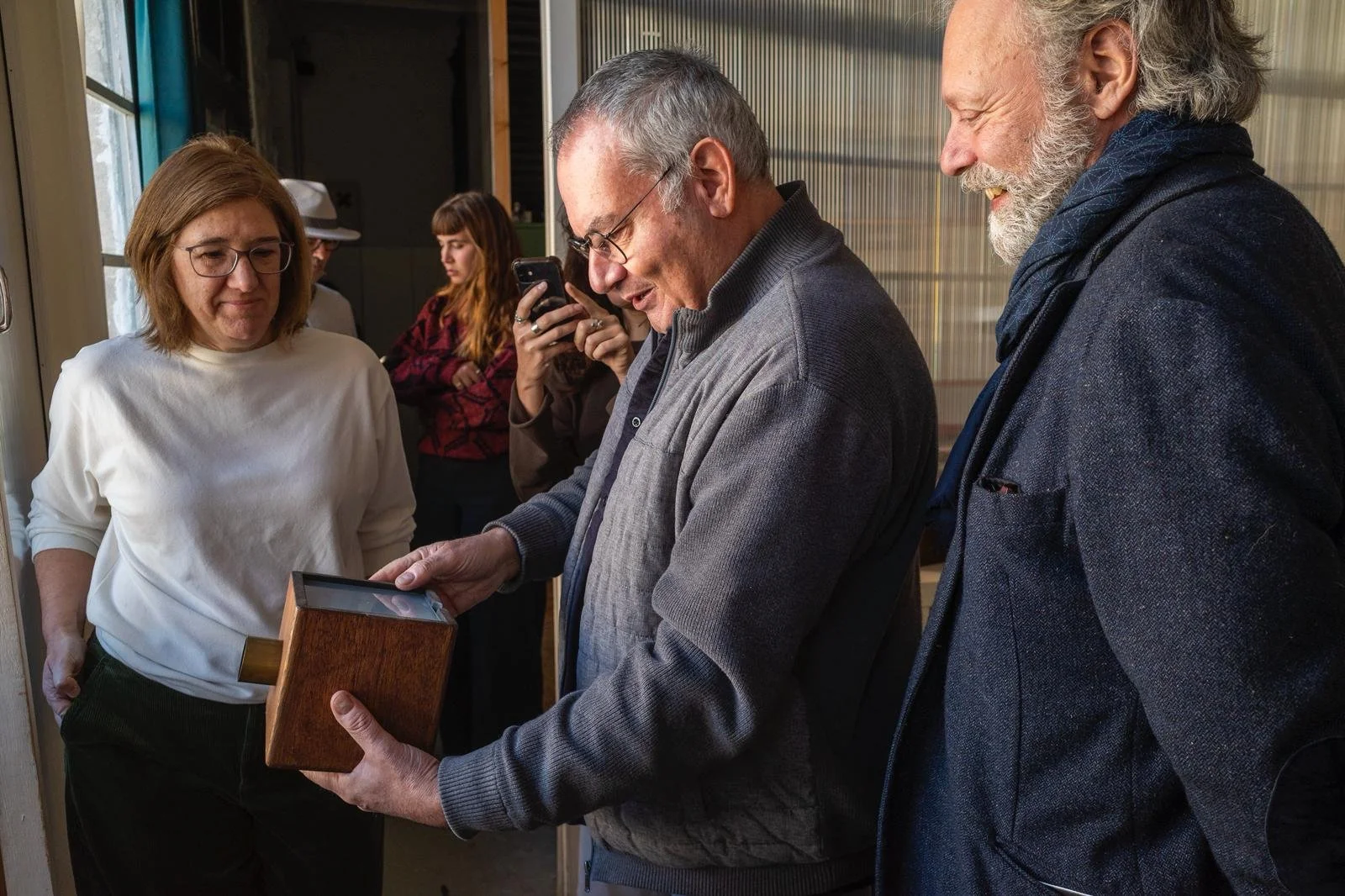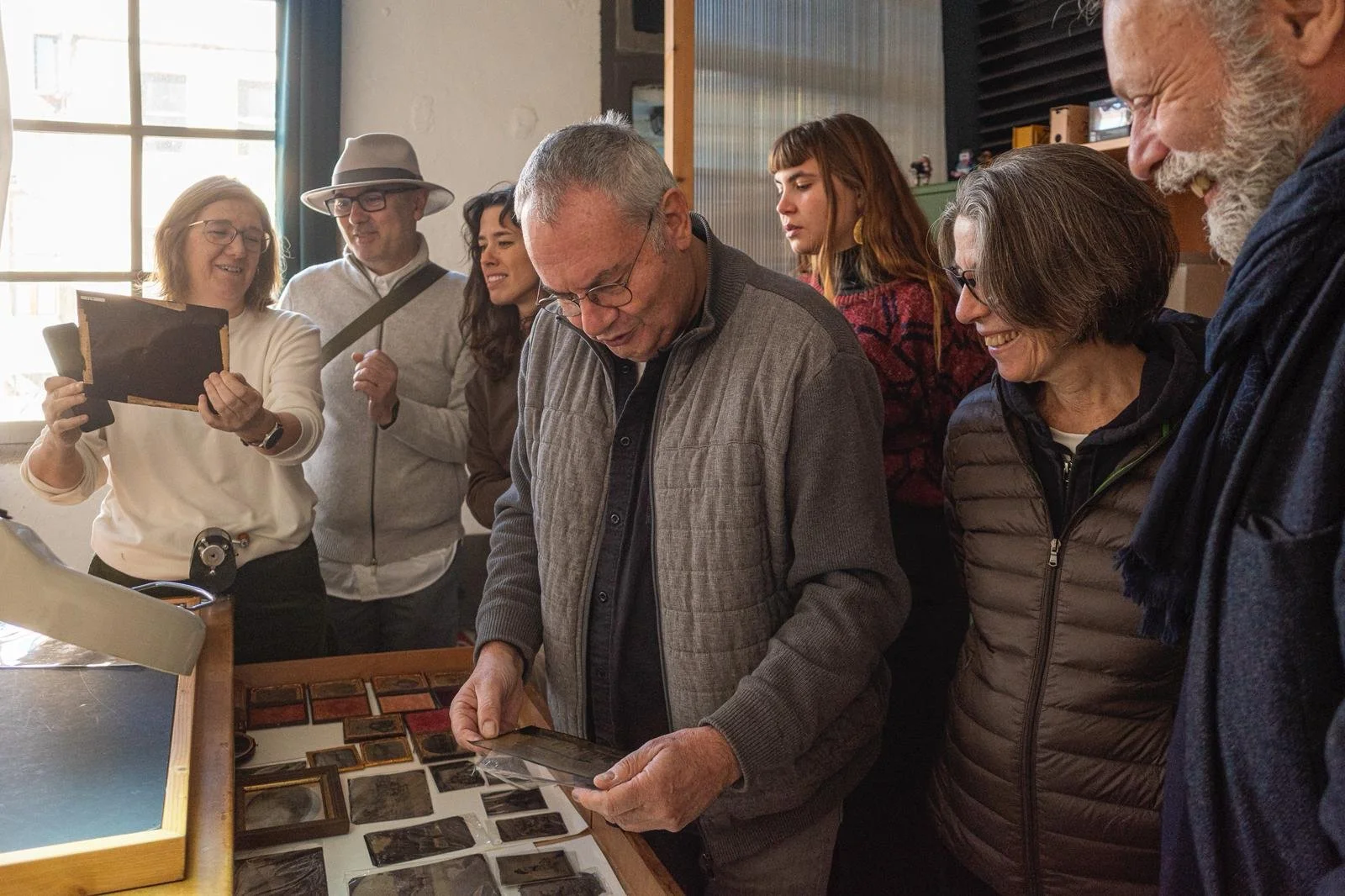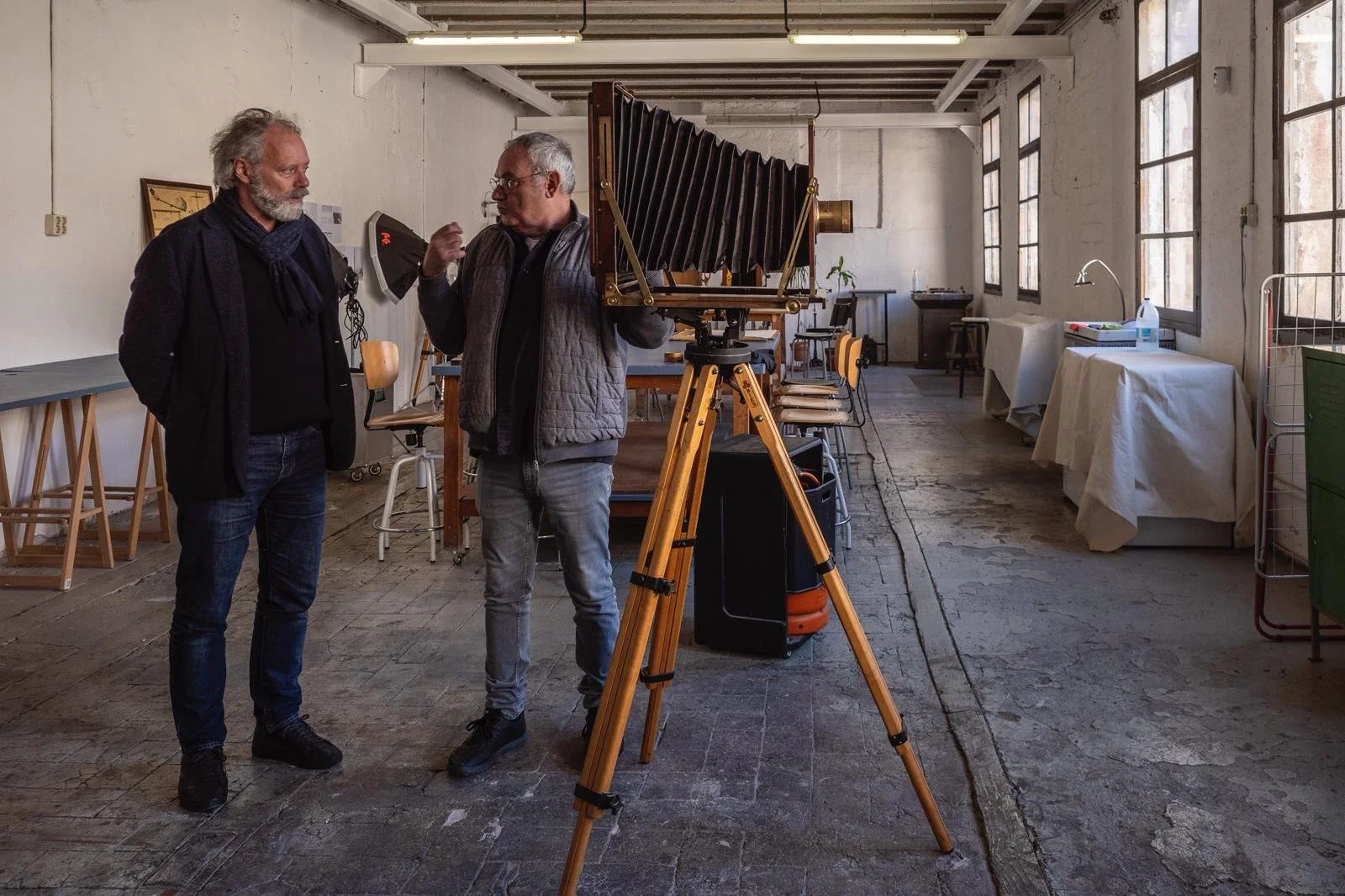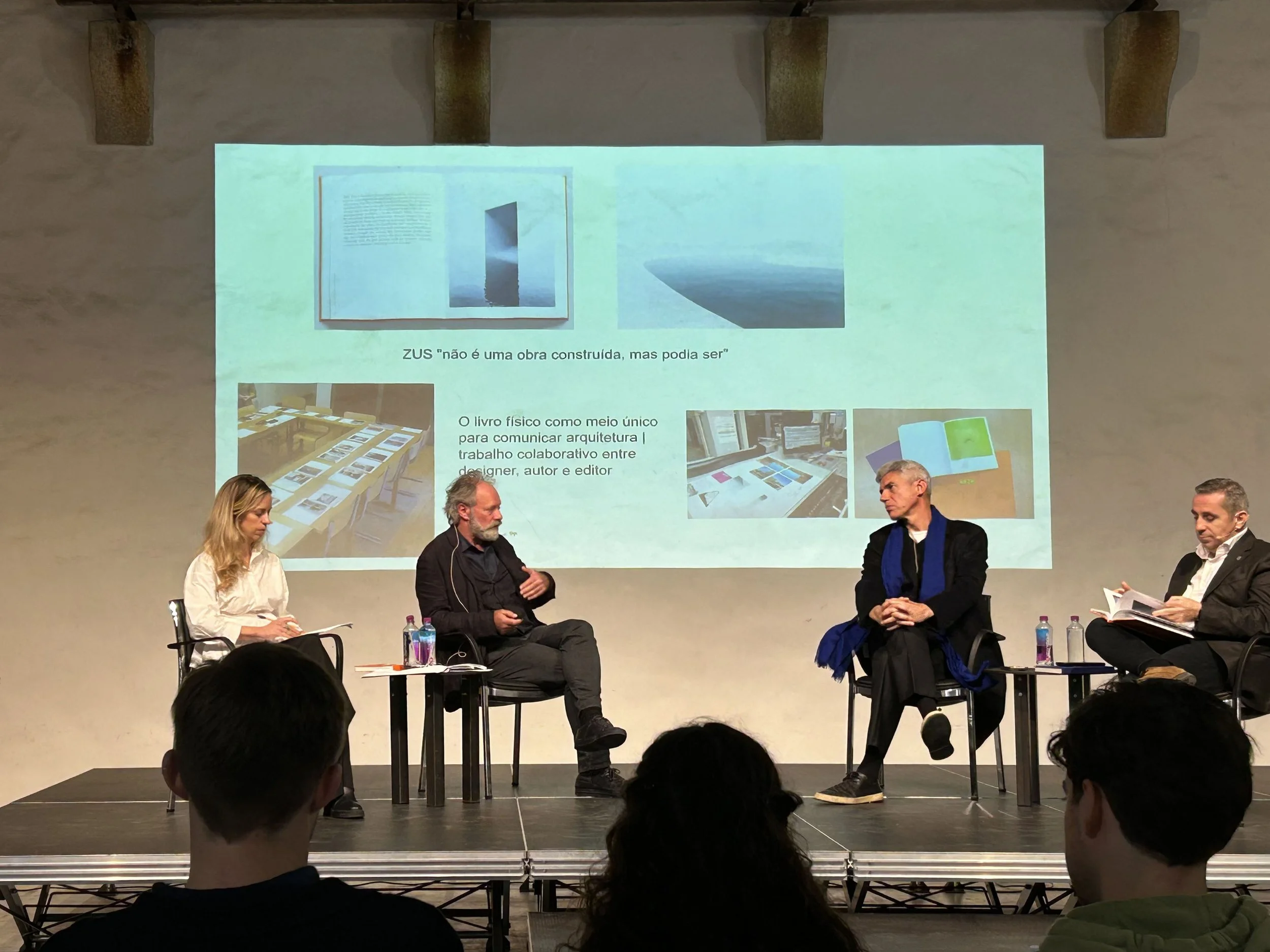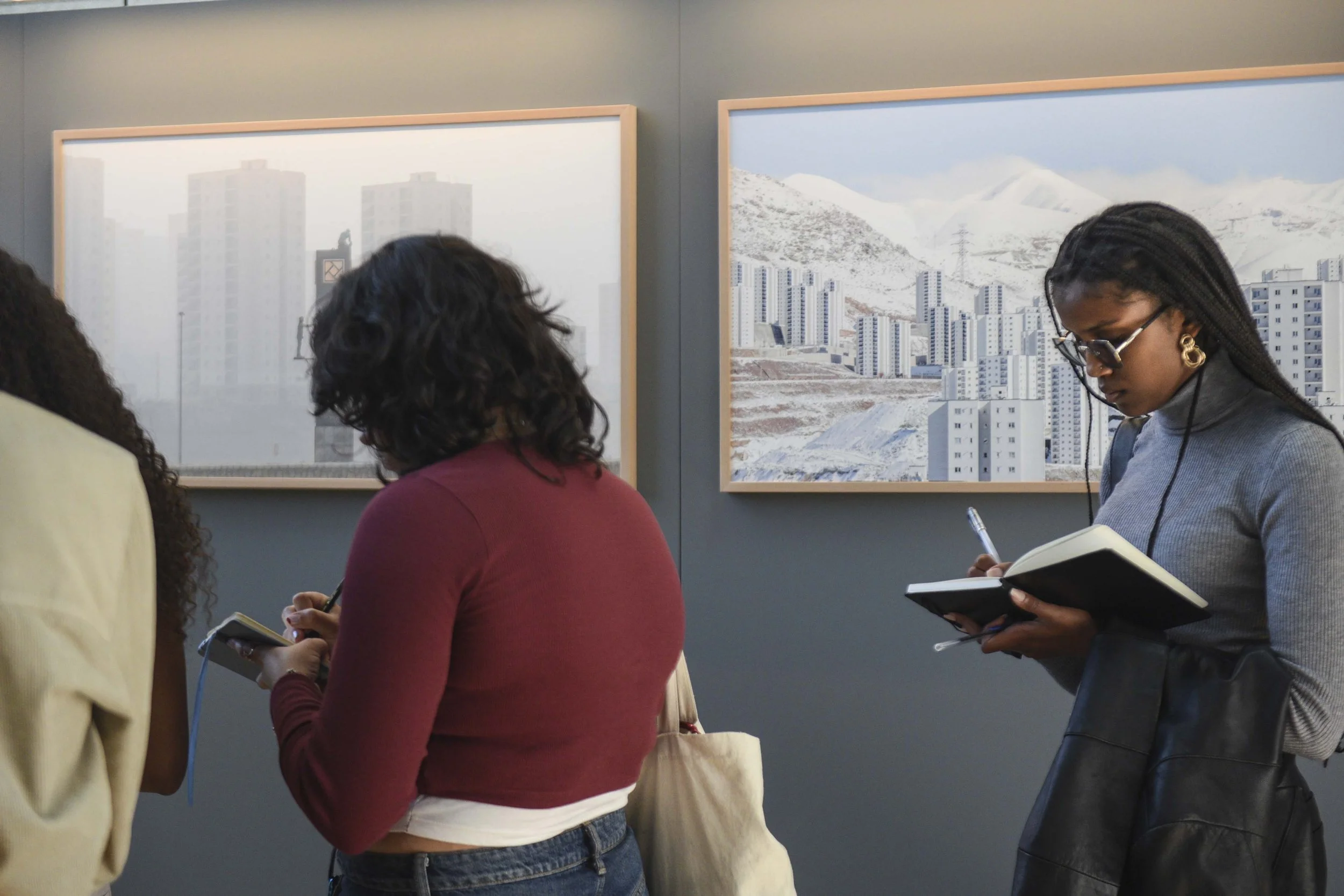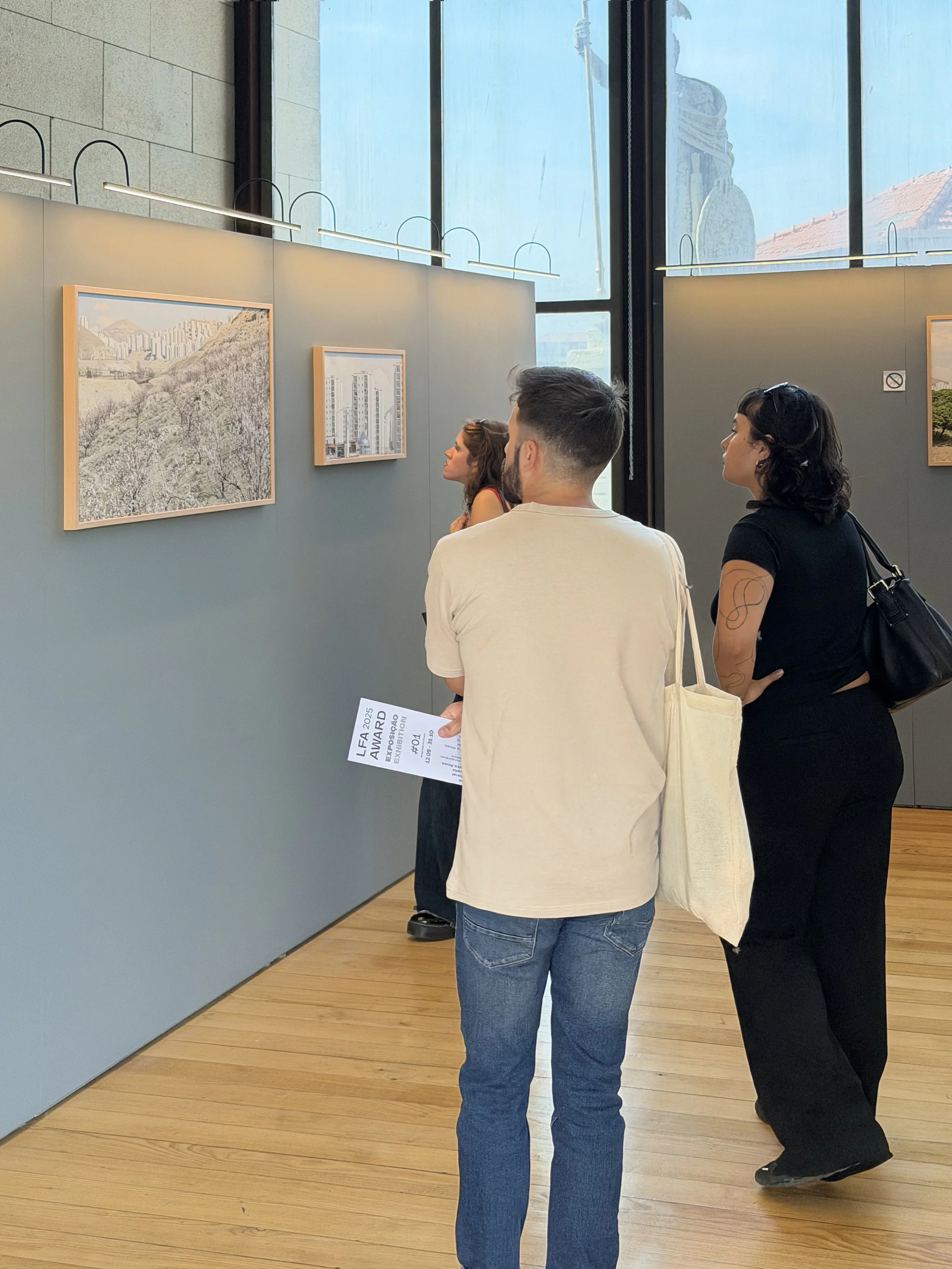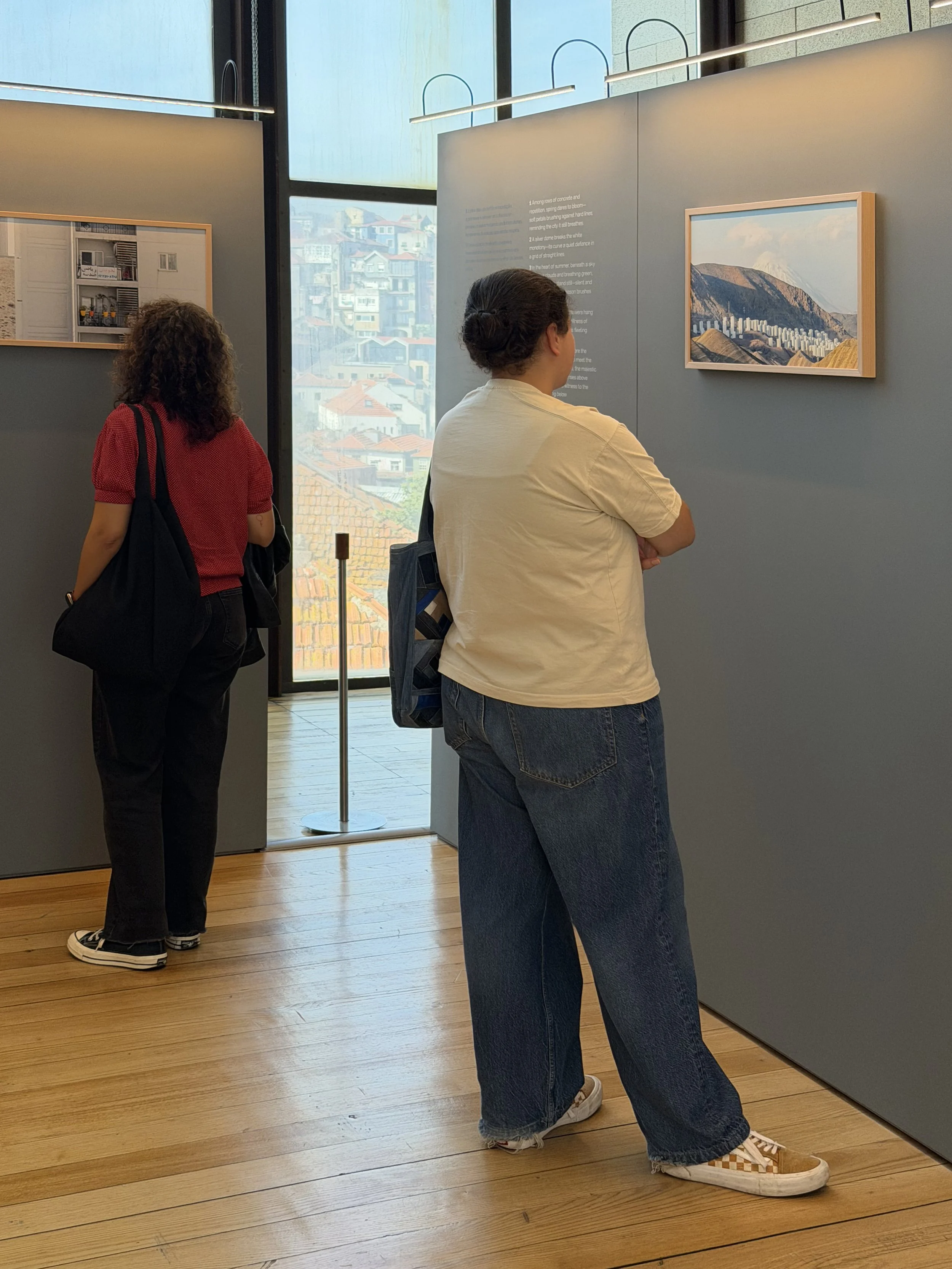Last Guided Tour of the LFA Award Exhibition “A Contemporary Look at Architecture”
The session is open to the general public - 8th NOVEMBER, SATURDAY, at 11:30 a.m. - ANTIGA CASA DA CÂMARA - next to SÉ DO PORTO
Following the success of the open class on 3 October, which brought together the academic community of the University of Porto around the Luis Ferreira Alves Award exhibition at the Old Town Hall, a new guided tour open to the public will take place next Saturday, 8 November.
The session will be covered by Canal 180, reinforcing the visibility of this initiative that brings the city, professionals and the general public closer to the contemporary languages of photography and architecture.
Lasting approximately one hour, the tour offers an opportunity for discovery and dialogue around the Luis Ferreira Alves Award exhibition – International Photography Competition “A Contemporary Look at Architecture”. The main guide will be Pedro Leão Neto, coordinator of the Award and lecturer at the Faculty of Architecture of the University of Porto (FAUP), where he is a researcher and teaches several courses dedicated to photography and architectural project communication.
The tour includes a brief introduction to the context and objectives of the Award, a presentation of the winning series and honourable mentions, and a guided tour of the exhibition with five thematic stops. The proposed readings address different ways of representing built space — from a poetic and sensitive perspective to photography as an instrument of research and memory. Researchers Maria Neto and Ana Miriam Rebelo (AAI) will also participate, contributing complementary perspectives on image, territory, and architecture.
These actions to promote the Luis Ferreira Alves Award count on the active collaboration of all partners, with special emphasis on the main promoter, the Porto City Council (CMP), and FAUP, the organising entity and research headquarters of Pedro Leão Neto. The aim is to bring the city and the community closer together, stimulate public interest in architectural photography and create a meeting place for authors, students and citizens curious about how images help to understand heritage and urban life.
The visit is free and open to everyone, being aimed at students, photographers, architects, teachers, researchers, municipal technicians and anyone interested in the relationship between image, architecture and the city.
Through this and future initiatives, the Luis Ferreira Alves Award reinforces its role as a platform for dialogue between art, architecture and society, promoting contemporary visual culture and broad access to knowledge and reflection on the space we inhabit.
Technical Details
Date: Saturday, 8 November
Location: Antiga Casa da Câmara, Porto
Duration: 11:30 a.m. – 12:35 p.m.
Coordination: Pedro Leão Neto (FAUP / LFA Award)
Guests: Architect Maria Neto (AAI) and Researcher Ana Miriam Rebelo (AAI)
Organisation: Luís Ferreira Alves Award / FAUP
With the support of: Porto City Council
Coverage: Canal 180
Admission is free, and the organisers recommend registering in advance
ABOUT THE Exhibition and Publication Launched in the Heart of Porto
On 12 September 2025, the Old Town Hall hosted the official award ceremony, the opening of the exhibition and the launch of the publication of the 1st edition of the Luis Ferreira Alves International Photography Award.
The event brought together architects, photographers, students, institutional representatives and the public, with the presence of the honouree's family and friends, his widow and founder of the award, Catarina Providência, as well as the winners: Cyril Weiner (2nd Prize), Sergio Belinchón (3rd Prize), Amelia Lancaster (Special Mention) and the representative of Iranian photographer Maho (1st Prize).
The members of the international jury — architect Eduardo Souto de Moura and photographer Hélène Binet — were also present, reinforcing the prestige of the initiative.
Video of event
Bilingual publication with international distribution
One of the highlights of the session was the presentation of the publication Prémio Luis Ferreira Alves | Edição 2025 (Luis Ferreira Alves Award | 2025 Edition) by the award coordinator and editor, architect Pedro Leão Neto. This is a bilingual (Portuguese-English) curatorial work that brings together the distinguished photographic series, accompanied by critical essays and reflections on architecture.
Bookstore
The result of a partnership between scopio Editions and the Spanish publisher Turner, the book guarantees wide international distribution, reinforcing the ambition to project the award to new audiences and geographies.
Award ceremony and jury's voice
This was followed by the presentation of the awards to the winners, attended by representatives of the sponsors: Filipa Varela, representing CIN (1st Prize); Ana Feijó Cunha, representing BPI/Fundação “la Caixa” (2nd Prize); and Maria Barreiro, representing Canon Portugal (3rd Prize).
Before the exhibition opened to the public, photographer Hélène Binet, representing the jury, shared a critical review of the winning works and the relevance of the award, emphasising the importance of photographic series that, in addition to their aesthetic quality, reveal narrative strength, consistency and critical reflection on architecture.
Exhibition open until 3 November
The exhibition, now open at the Antiga Casa da Câmara, in Terreiro da Sé, will run until 30 November 2025. It brings together the award-winning and distinguished series, contextualised with critical texts, offering the public an immersion in architectural photography as an instrument of cultural and social reflection.
The choice of venue reinforces the symbolic dimension of the event, bringing Luis Ferreira Alves' legacy closer to the architectural tradition of the city and the work of Fernando Távora, a master with whom he worked continuously, alongside Álvaro Siza and Eduardo Souto de Moura.
A network of institutional partnerships
The Luis Ferreira Alves Award is promoted under an agreement between the photographer's heirs and the competition organisers — Porto City Council (CMP) and Cityscopio – Cultural Association (CCA).
It also has the institutional support of the Faculty of Architecture of the University of Porto (FAUP), the Northern Regional Coordination and Development Commission (CCDR-N), the Marques da Silva Foundation Institute (FIMS), the Order of Architects (OA) and the House of Architecture – Portuguese Centre for Architecture (strategic partner of the competition).
The project is also sponsored by CIN, BPI/Fundação “la Caixa” and Canon, and has Metro do Porto, Panoramah! and AMAG as communication partners.
A platform for memory and the future
With 1,495 entries from 99 countries, the first edition of the Luis Ferreira Alves Award established itself as an international platform for critical reflection on architecture through photography.
More than a gesture of homage, this cultural initiative extends the legacy of Luis Ferreira Alves, a photographer and humanist who projected Portuguese architecture beyond borders, while inaugurating a space for thought and debate with its own identity and ambition.









